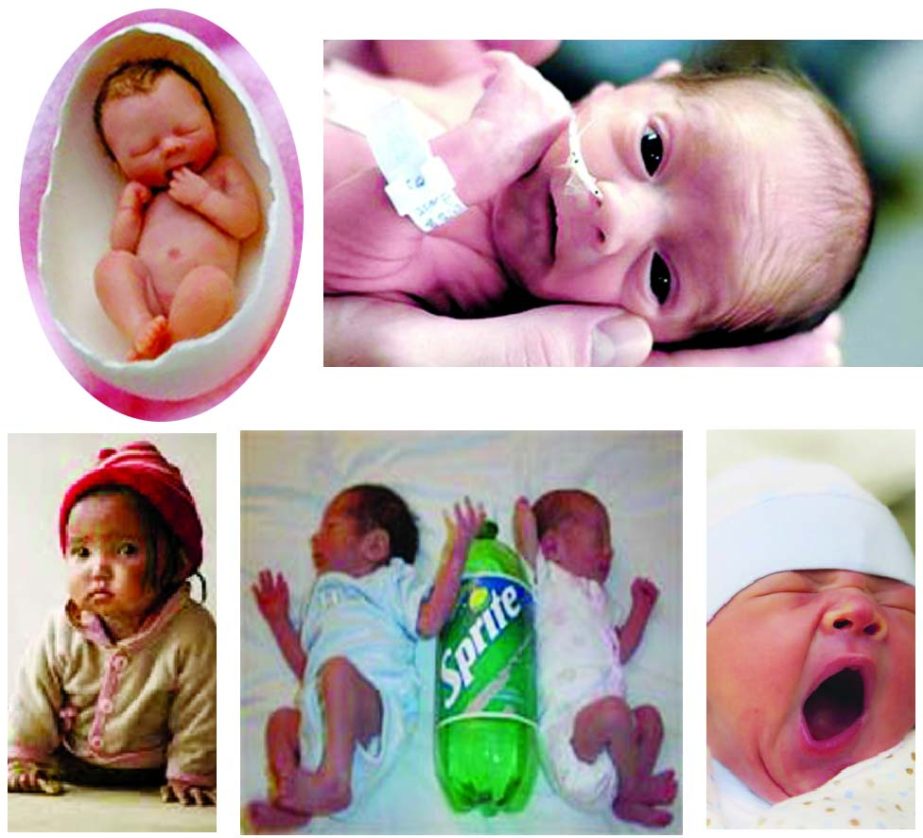
Md Shairul Mashreque & ZRM Abdullah Kaiser :
Any mission for population control ought to take stock of pre-mature pregnancy. The younger a pregnant woman is the immature, ill health and mentally sick baby she is likely to have. The incidence of pre-mature birth is resultantly perilous to life and health of both mothers and children. This phenomenon is of course the inevitable outcome of early marriage. In olden days early marriage was ritually prescribed in the Asian sub-continent. Now it is highly discouraged and institutionally prohibited. Even in Bangladesh including other countries more than half of the young women were married by the time they were 16 years old. Some important facts about child marriage in Bangladesh are the following:
Nearly half of the women in Bangladesh marry below 18 years
of age. Some
20 per cent of the daughters become mother by the age of 15.
Pregnancy before 20 years of age entails serious health problem for too young mother and baby. Baby is born too immature weighing too
little. Mothers and babies are more likely to die during birth and babies are more likely to die in the first year of their life.
Early marriage causes girls to drop out of education and limits their opportunities for social interaction. Only 45 per cent of adolescent girls are enrolled in secondary school and even fewer attend regularly. New brides are expected to work in their husbands’ households and are subject to the same hazards as child domestic workers.
Early marriage leads to early pregnancy. One third of teenage girls aged 15 to 19 are mothers or are already pregnant. Adolescent
mothers are more likely to suffer from birthing complications thean adult womean.
UNICEF has long viewed rightsising family especially birth spacing as an essential part of maternal and child health service. Advocacy for child spacing is intended to bring about an improvement in the survival, well being and quality of life of the child, the mother and the family.
As part of its mandate for improving health of the babies and mother UNICEF has long been playing role for the reduction and for support of breastfeeding. UNICEF as such makes a distinct contribution towards family planning and population control. UNICEF policy
advocacy continues to support well informed timing and spacing of birth and to address well documented disadvantages for both mother and child of birth that are ‘too close or too many’ to mother who are
‘too young or too old.’
UNICEF has gone too far with its advocacy program for healthy pregnancies protecting the rights of both mothers and babies. UNICEF endeavours to make it clear that healthy pregnancies can have a
profound impact on mothers, children and society at large. “Expectant mother require adequate nutrition and good, accessible prenatal,
delivery, obstetric and post natal care, as well as an environment free of pollutants, exhausting labour and extreme stress such as conflict” (UNICEF 2001:20). Investment on maternal nutrition, on protein, vitamin A and iron supplementation or fortification yields high returns. Eliminating malnutrition among expectant mother reduces disabilities among their infants by almost one-third (Ibid 2001:20). UNICEF stresses early nutrition pregnant to help prevent malnutribution infants
Newborn survival seems to be the function of Gestational age (GA). Experts comment, “Babies born prematurely are at a higher risk of dying in the neonatal period than those born at term, especially in developing countries where about half of all mothers give birth at home without a skilled birth attendant. Complications of prematurity are now the second leading cause of under-five child deaths and the leading cause of neonatal deaths (35 per cent).
Prematurity is also a risk factor for other causes of death, especially infections, in the neonatal and post-neonatal periods and for long-term neurodevelopmental sequelae.”
It has been estimated that’ about 15 million preterm babies are born each year worldwide; the majority of them (60 per cent) are born in south Asia and sub-Saharan Africa. The mechanisms of preterm labor are not fully understood, although there is a strong link with infection or inflammation. Prevention of preterm labor and delivery has proved to be difficult
Each year, some 15 million babies in the world, more than one in 10 births, are born too early, according to the recent released report Born too soon: the global action report on preterm birth. Bangladesh is among the 10 countries with the greatest numbers (424100) of
preterm births.
More than one million of those babies die shortly after birth;
countless others suffer some type of lifelong physical, neurological or educational disability – often at great cost to families and society.
Estimated three-quarters of those preterm babies who die could
survive without expensive care if a few proven and inexpensive
treatments and preventions were available worldwide, according to more than 100 experts who
contributed to the report,
representing almost 40 UN
agencies, universities and
organisations. Antenatal steroid injections for mothers in premature labor cost US$ 1 per injection. This helps develop immature fetal lungs and prevent respiratory problems; yet, in low-income countries, they are only available and provided for 10 percent of those in need.
Kangaroo care where the infant
is held skin-to-skin on the
mother’s chest to keep warm. The warmth is very important for
premature infants. Kangaroo care makes frequent breastfeeding easy and provides constant maternal supervision for the infant.
Professor, Dept of Public Administration, Chittagong University, and ZRM Abdullah Kaiser,
Lecturer, , Dept of Public Administration, Chittagong University)

